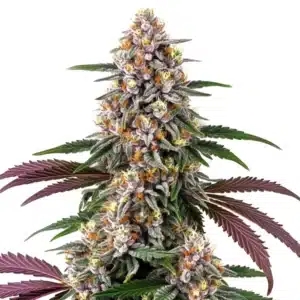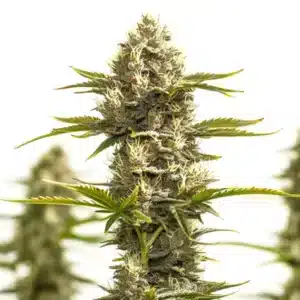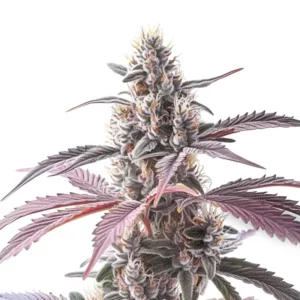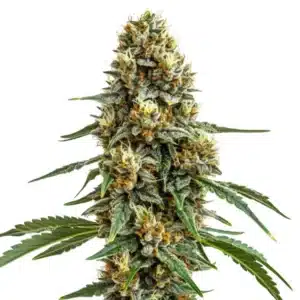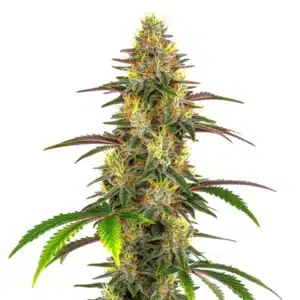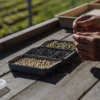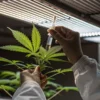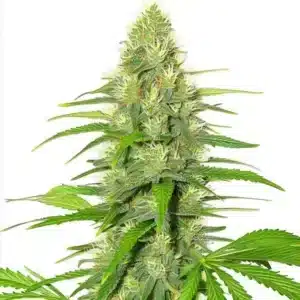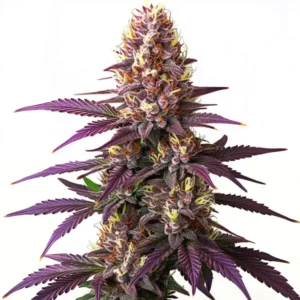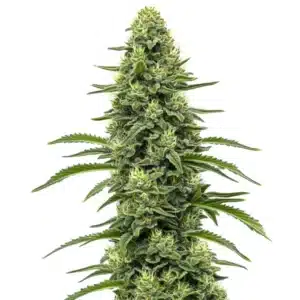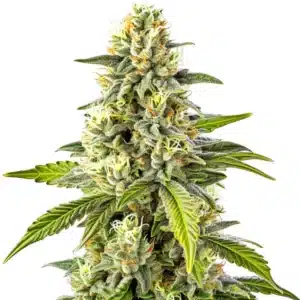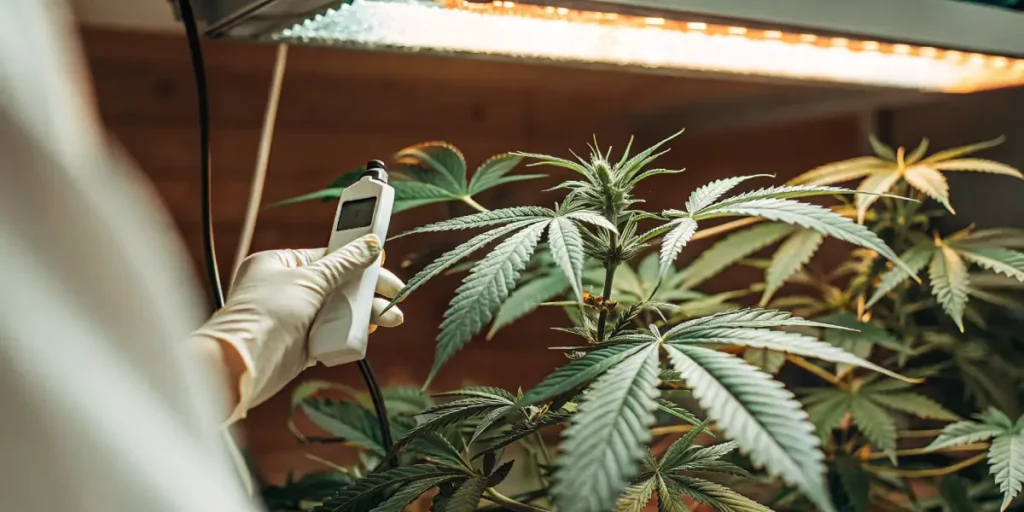
Temperature and Enzyme Activity in Cannabis
Temperature plays a crucial role in the world of cannabis cultivation. It directly impacts enzyme activity, a key factor in healthy plant growth. Enzymes are proteins that speed up chemical reactions in plants, and when discussing temperature and enzyme activity in cannabis, the relationship becomes even clearer. These reactions include nutrient processing, cell division, and overall metabolic efficiency, all of which are essential for vigorous growth and higher yields.
The optimal temperature for enzyme activity in cannabis cultivation usually ranges between 70°F and 85°F (21°C and 29°C). Within this range, enzymes perform efficiently, ensuring robust plant development. But what happens when temperatures deviate from this range? Let’s delve into how temperature affects enzyme activity in cannabis plants.
Recommended Strains
Gelato
|
|
THC | 27% (High) |
|
|
Type | Feminized |
|
|
Yield | High |
|
|
Phenotype | 50% Indica / 50% Sativa |
Purple Punch
|
|
THC | 15% - 20% (Medium) |
|
|
Type | Feminized |
|
|
Yield | High |
|
|
Phenotype | 80% Indica / 20% Sativa |
Temperature variations can either enhance or hinder enzyme activity. If it’s too cold, enzymes slow down, potentially stunting plant growth. On the other hand, excessive heat can denature enzymes, rendering them ineffective. Therefore, knowing the enzyme activity temperature range in cannabis growth is vital for both novice and seasoned growers.
Optimal Temperature for Enzyme Activity in Cannabis Cultivation
For many cannabis strains, maintaining the right temperature is key to unlocking their full potential. A stable environment encourages enzymes to work efficiently, aiding in processes like photosynthesis and nutrient uptake. This balance is crucial for developing potent and healthy plants.
Take the Gelato strain from Blimburn Seeds, for example. Known for its rich flavor and high THC content, Gelato thrives in a controlled temperature environment. Consistency in temperature ensures that enzymes remain active, allowing the plant to absorb nutrients effectively, which contributes to its notable characteristics.
Besides to promoting healthy growth, the optimal temperature for enzyme activity in cannabis cultivation can influence the efficiency of metabolic processes. When enzymes are at their peak performance, plants can better manage stress, resist diseases, and maximize yield quality. This is particularly important for commercial growers aiming for superior product consistency.
Moreover, knowing the relationship between temperature and enzyme efficiency in cannabis can guide growers in making informed decisions about their cultivation practices. By maintaining ideal temperature conditions, growers can enhance the overall health and productivity of their plants, ensuring that they reach their genetic potential without unnecessary setbacks.
How Temperature Affects Enzyme Activity in Cannabis Plants
Temperature fluctuations can create stress in cannabis plants. When temperatures drop, enzymes slow down, hindering the plant’s ability to process nutrients. This can lead to deficiencies and weaker growth, affecting yield and potency.
Conversely, temperatures that are too high can cause enzymes to denature, a process where they lose their shape and functionality. This can be especially detrimental during the flowering stage, leading to poor bud development and reduced THC levels.
Knowing how temperature affects enzyme activity in cannabis plants is essential for optimizing growth conditions. Growers can use this knowledge to adjust environmental factors, ensuring that the plants are not only surviving but thriving in their environment. This proactive approach can lead to better control over the final product’s quality and characteristics.
Furthermore, temperature and enzyme activity in cannabis are closely linked, and even slight deviations can have significant impacts on the plant’s overall health. By closely monitoring these parameters, growers can prevent potential issues before they arise, ensuring a successful and productive cultivation cycle.
Promos & Deals
Enzyme Activity Temperature Range in Cannabis Growth
Certain strains have adapted to specific climates, affecting their enzyme activity temperature range. For example, Purple Punch enjoys slightly cooler environments. This doesn’t mean it can’t thrive in warmer areas, but growers should be mindful of how temperature changes can influence enzyme activity.
Knowing this range allows growers to tailor their environment to suit their chosen strain. This ensures enzymes remain active and efficient, promoting vigorous growth and high-quality yields.
The enzyme activity temperature range in cannabis growth is not just a guideline but a critical factor that can determine the success of a cultivation project. Each strain’s unique requirements mean that what works for one may not work for another, making it essential to research and understand the specific needs of the plants being grown.
Moreover, cannabis enzyme activity influenced by temperature changes can also affect how plants respond to other environmental stresses such as humidity and light intensity. By optimizing the temperature range, growers can create a more resilient cultivation environment capable of producing consistent, high-quality results.
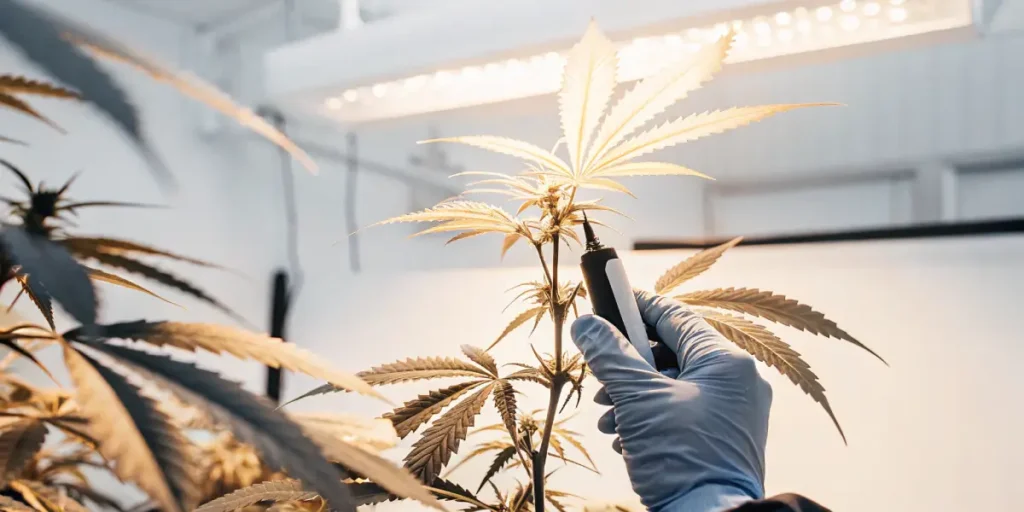
Real-Life Examples and Practical Tips
- Monitor your grow room’s temperature using a reliable thermometer. Regular checks can prevent unwanted fluctuations.
- Use fans and air conditioning to maintain a stable environment. Proper airflow also helps in distributing heat evenly.
- Consider strain-specific requirements. Some strains are more forgiving of temperature variations than others.
For indoor growers, adjusting the lights’ height can also help manage heat levels. Lights too close to plants can raise temperatures, while those too far can result in cooler conditions.
Outdoor growers should be aware of their local climate and plan accordingly. Understanding seasonal changes and their impact on temperature and enzyme activity in cannabis can lead to better crop management.
Implementing these practical tips can make a significant difference in the success of a cultivation operation. By being proactive and attentive to the nuances of temperature management, growers can optimize the conditions for enzyme activity, leading to healthier plants and more abundant harvests.
Additionally, sharing insights and experiences with other growers can provide valuable feedback and innovative solutions. Community resources and forums can offer a wealth of information on managing temperature and enzyme activity in cannabis, helping growers stay informed and adaptable to new techniques and technologies.

FAQs
What is the ideal temperature range for cannabis enzyme activity?
The ideal temperature range for cannabis enzyme activity is typically between 70°F and 85°F (21°C to 29°C). Within this range, enzymes operate efficiently, facilitating processes like nutrient uptake and photosynthesis. Maintaining this temperature range ensures that cannabis plants grow healthy and robust.
Going beyond this range can stress the plants. Cold temperatures can slow down enzyme activity, while excessive heat can lead to enzyme denaturation, both of which can negatively impact plant growth and yield.
Maintaining the ideal temperature range is crucial for optimizing the relationship between temperature and enzyme efficiency in cannabis. This balance not only supports healthy plant growth but also maximizes the plant’s ability to produce cannabinoids and terpenes, enhancing its overall quality and appeal.
Growers who prioritize maintaining the optimal temperature for enzyme activity in cannabis cultivation often see improved outcomes in terms of plant health, yield, and potency. By adhering to these guidelines, they can ensure that their crops achieve their full potential.
How does temperature impact cannabis potency?
Temperature directly influences the efficiency of enzymes responsible for converting nutrients into essential compounds like THC and CBD. When enzymes function optimally, cannabis plants can develop their full cannabinoid potential, leading to higher potency.
Strains such as Gelato and White Widow benefit from controlled environments where temperature is kept within the optimal range. This ensures that enzyme activities remain efficient, contributing to the strain’s overall strength and quality.
Besides to affecting potency, temperature and enzyme activity in cannabis are closely tied to the plant’s overall resilience and growth rate. By maintaining an environment conducive to optimal enzyme function, growers can enhance not only the potency but also the vitality and robustness of their plants.
Knowing how temperature impacts enzyme activity in cannabis plants can provide growers with the tools to manipulate environmental conditions to their advantage. This strategic approach can lead to more potent and flavorful cannabis products, meeting both personal and commercial cultivation goals.
Can temperature fluctuations harm cannabis plants?
Yes, temperature fluctuations can be harmful to cannabis plants. Rapid changes can cause stress, affecting enzyme activity and overall plant health. This stress can lead to issues like nutrient deficiencies, reduced growth rates, and lower yields.
By ensuring a stable temperature environment, growers can prevent these issues and support healthy enzyme function. This is particularly important during critical growth stages such as flowering.
Temperature fluctuations can disrupt the delicate balance required for optimal enzyme activity in cannabis plants, leading to suboptimal growth and development. By maintaining consistent environmental conditions, growers can minimize stress and promote a more stable and productive cultivation cycle.
Proactively managing temperature changes is a key component of successful cultivation. By understanding and addressing the potential impacts of temperature variations, growers can safeguard their crops and ensure that they thrive throughout the growing season.
What tools can help regulate temperature in cannabis cultivation?
Several tools can help regulate temperature in cannabis cultivation. Thermometers and hygrometers allow for accurate monitoring of the grow environment. Fans and air conditioning units can be employed to maintain a stable temperature.
For indoor grows, adjusting the distance of lights and using reflective materials can also help manage heat distribution. Outdoor growers might use shade cloths or select heat-resistant strains like Purple Punch to adapt to their environment.
Utilizing advanced technologies such as automated climate control systems can further enhance the ability to maintain the optimal temperature for enzyme activity in cannabis cultivation. These systems can provide real-time data and adjustments, ensuring precision and efficiency in temperature management.
Additionally, investing in high-quality equipment designed specifically for cannabis cultivation can result in more reliable and consistent temperature regulation. By leveraging these tools, growers can create an environment that supports healthy enzyme activity and plant growth.
Are some cannabis strains more temperature-resistant than others?
Yes, some cannabis strains are more temperature-resistant than others. Strains like White Widow and Purple Punch have adapted to a range of climates, making them more resilient to temperature changes. This adaptability can be beneficial for growers in regions with fluctuating temperatures.
Researching the specific needs of your chosen strain from Blimburn Seeds can provide insights into its ideal growing conditions. Tailoring the environment to these needs ensures optimal enzyme activity and plant health.
By selecting strains with known temperature resilience, growers can mitigate the risks associated with temperature fluctuations and enhance the stability of their cultivation efforts. This strategic choice can lead to more predictable outcomes and higher-quality yields.
Furthermore, knowing the enzyme activity temperature range in cannabis growth for different strains can guide growers in creating customized cultivation plans. This personalized approach ensures that each strain receives the specific care it needs to thrive, resulting in healthier plants and more abundant harvests.



